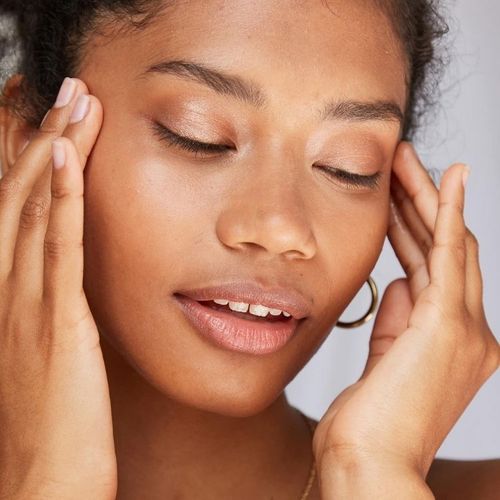Recently, the science of reducing wrinkles has been transformed by the introduction of remarkable new devices and treatments that don't involve surgery. Here are the latest developments that could help men and women alike look and feel better if they are concerned about wrinkles...
- Digital imaging machine that provides a computerized analysis of your skin. A device called Visia, made by Canfield Clinical Systems, uses a computer-aided digital camera to analyze facial skin in minute detail.
It gives doctors an unprecedented ability to diagnose skin conditions and monitor the effectiveness of various treatments.
How it works: While the patient's head is immobilized, digital photographs are taken under different types of light to identify the precise location and depth of various skin features, including wrinkles, brown spots, enlarged pores and acne. Ultraviolet light is used to scan for latent sun damage, which will emerge as the patient gets older.
When the analysis is complete, the patient's profile is matched against a database containing thousands of profiles.
A percentile score shows how the patient's skin compares with that of people of similar age, gender and skin type. This analysis can then be used to guide doctors in prescribing and administering treatments. On subsequent visits, new digital images are taken to measure how well the skin is responding.
- Laser treatment that stimulates skin to renew itself. Intense pulsed light (IPL) photorejuvenation is becoming the treatment of choice for eliminating fine wrinkles, brown spots, broken capillaries and birthmarks—all without any recovery time.
How it works: This treatment produces light pulses at a.variety of wavelengths, which penetrate the skin to different depths, depending on the problem being treated (brown spots tend to lie near the surface, for example, while broken capillaries are slightly below).
This allows blemishes to be treated precisely without damaging surrounding tissue. Even better, IPL can penetrate below the top layer of skin (epidermis) to stimulate the cells that produce collagen and elastin—naturally occurring tissues that make skin more firm and elastic, and which we all tend to lose as we get older. IPL photorejuvenation reverses this aging effect, making skin tighter and plumper.
While IPL has been around for a number of years, a new machine called the Lumenis One (manufactured by Lumenis) represents a significant advance over previous IPL devices.
Among other things, its computer has an improved ability to deliver light at exactly the right location. This new device is so good at removing difficult-to-treat blemishes—and rejuvenating the skin—that even longtime patients praise its effectiveness.
This treatment is available in most states. To find a practitioner in your area, call Lumenis at 877-586-3647.
Sessions last approximately 20 minutes. Typically, patients undergo a series of IPL treatments over several weeks, followed by a maintenance treatment every six months.
With older IPL technology, treatments lasted 45 minutes, but the maintenance intervals were the same.
Cost: $200 to $500 per treatment.
- Radio frequency devices that use radio frequency to tighten the skin have been available for approximately two years, but a new device called Titan (manufactured by Cutera) represents a big improvement over previous machines—it is safer, more effective and less costly. It is available throughout the US and abroad. Radio frequency devices operate in the infrared range to heat the tissue under the skin surface, causing loose skin and its underlying collagen to contract and tighten. The treatment is effective even on large wrinkles.
Since it doesn't remove any layers of skin, there is no flaking or redness following the treatment, eliminating the need for recovery time.
Radio frequency treatment is currently approved by the US Food and Drug Administration (FDA) for use on the forehead and around the eyes. Approval is pending for use on cheek folds and the neck area. A series of treatments may be needed for optimal results. It is not yet known how long the results will last.
Cost: $500 to $2,500 per treatment, depending on the area covered and the amount of time involved.
- Hyaluronic filler that replaces collagen. Deeper lines can be temporarily eliminated by injecting a filler material into the fat layer directly beneath the depressed area.
Until recently, the only filler approved for use in the US was bovine collagen, which is derived from cattle.
Collagen injections last approximately three months and require allergy testing before use.
The FDA has approved Restylane®, a hyaluronic acid product already available in approximately 60 countries.
Because hyaluronic acid occurs naturally in humans, it's non-allergenic, and no skin test is necessary.
In addition, Restylane injections last much longer than collagen injections—typically up to one year.
Many dermatologists and aesthetic surgeons now use Restylane exclusively, while others continue to offer both Restylane and collagen.
Cost: $500 to $1,000 per treatment.
MULTI-TREATMENT SKIN MAINTENANCE
Taking advantage of the array of new tools described above, many people are now adopting a maintenance program where they see a doctor (either a plastic surgeon, dermatologist or other medical doctor who has been trained to perform aesthetic services) every six months for IPL treatment and Botox®* injections, and on every second visit—once a year—they get a Restylane touch-up. Other procedures are done as needed, including radio frequency treatment and CO, laser resurfacing (which produces more dramatic results than IPL, but also requires recovery time).
*Botox has risks. Ask your doctor.
The final component of the program is a good home-care regimen—including regular use of sunblock to prevent ultraviolet (UV) damage, as well as products that speed up the turnover of the skin cells.
Bottom line: People who decide to follow this skin rejuvenation program not only have great-looking skin, but they also have a less invasive alternative to cosmetic surgery as they get older.
